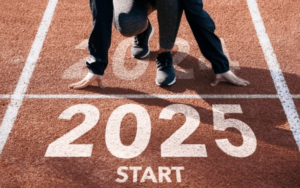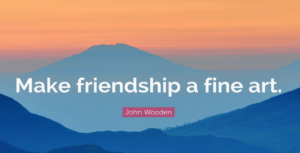Woody’s new novel “The Butterfly Tree” is available at Amazon (click here), other online retailers, and orderable at all bookshops.
*
From Woody’s column archives, late December 2014, slightly revised…
*
“New Year’s is a harmless annual institution,” wrote Mark Twain, “of no particular use to anybody save as a scapegoat for promiscuous drunks, and friendly calls, and humbug resolutions, and we wish you to enjoy it with a looseness suited to the greatness of the occasion.”
In addition to wishing you and yours a New Year filled with great joy and health, I thought I would take a moment to make some resolutions for 2025 – humbug and laudable, both. Perhaps you will find some worthy of your own pursuit.
I resolve to…
Keep in mind the words of Ralph Waldo Emerson, who wrote: “Write it on your heart that every day is the best day in the year. He is rich who owns the day, and no one owns the day who allows it to be invaded with fret and anxiety.”
Own my day.
Try to live up to the wisdom of these lines in Rudyard Kipling’s remarkable poem “If” – “If you can meet with Triumph and Disaster / And treat those two imposters just the same.”
Try to treat Fret and Anxiety like the imposters they are.
Unplug, unplug, unplug.
Sunscreen, sunscreen, sunscreen.
Pass up the nearest open parking spot in order to leave it for someone, perhaps an elderly person, who might find it difficult to walk very far.
Give compliments 100 times more frequently than unsolicited advice.
Listen to more live music, the smaller the venue the better.
Listen to others more – and more closely.
Laugh more – including at myself.
As my hero Coach John Wooden encouraged and practiced, “Make friendship a fine art.”
Heed the wisdom of another hero of mine, Wayne Bryan: “If you don’t make an effort to help others less fortunate than you, then you’re just wasting your time on Earth.”
Try to, as Eleanor Roosevelt advised, “Do one thing every day that scares you.” Or, at least, challenges me.
Heed Samuel Beckett’s wisdom to “Try again. Fail again. Fail better.”
Try to suffer fools more gladly. As my Grandpa Ansel said, “It is good at times to deal with ignorant people because it makes you feel so smart.”
Try not to be an ignorant fool too often myself.
Again from Grandpa Ansel, keep in mind: “The only way to travel life’s road is to cross one bridge at a time.”
Read deeply from good books.
Read shallowly from fun books, too.
Use my car horn as though I have to pay $10 for each honk.
Buy two of anything a kid under age 10 is selling – and give one back to them to enjoy.
Check my email in-box less frequently and write more snail-mail letters.
Less screen time, more face-to-face time.
Shop at local small businesses first, local chains second, and buy on-line as a last resort.
Keep a coffee-chain gift card in my wallet for when I come across someone down-on-their-luck.
Visit more museums.
Visit the beach more often, too.
Pick up litter and not just on Beach Clean Up days.
Heed John Muir’s call to “Keep close to nature’s heart and break clear away, once in a while, and climb a mountain or spend a week in the woods. Wash your spirit clean.”
Be quicker to forgive.
Be slower to criticize – including of myself.
Stop to smell the roses – and daydream at the clouds and savor sunsets and marvel at starry night skies and appreciate similar works of nature’s art.
Give flowers out of the blue, not just to mark special occasions.
Lastly, again as Coach Wooden advised, I resolve in 2025 to try to “Make each day your masterpiece.”
* * *
Essay copyrights Woody Woodburn
Woody’s new novel “The Butterfly Tree” is now available in paperback and eBook at Amazon (click here), other online bookstores, and is orderable at all bookshops.
*
Woody writes a weekly column for The Ventura County Star and can be contacted at WoodyWriter@gmail.com. Follow him on Twitter and Instagram at @woodywoodburn.










